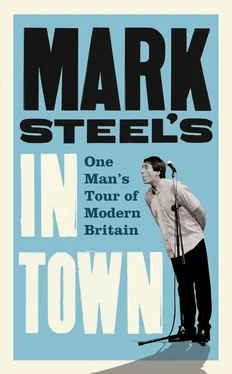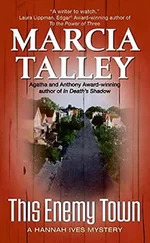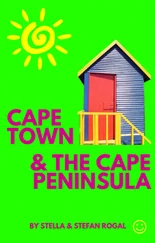The book starts off on a positive note, telling us: ‘Basingstoke is one of the most derided towns in England. Its reputation is as an over-developed eyesore of numbing dullness. Its very name lends itself to mockery. Basingjoke, Boringstoke and the ironic Amazingstoke are used by its own residents, not always with affection.’
But if you look into the town’s past it becomes clear that this isn’t just a new town built by numbers to fill up a bit of Hampshire. Because, far from being solely a modern butt of jokes, the place has been loathed for centuries. The founder of Methodism, John Wesley, went there in 1759 and wrote afterwards, ‘The inhabitants are like wild beasts, slow of heart and dull of understanding.’
‘But surely,’ you must be thinking, ‘it was more exciting in 1669.’ Well, the Grand Duke of Tuscany went there that year, and his valet wrote an account of the visit: ‘His Highness, arriving betimes at Basingstoke, set out to explore it on foot, but it seemed so wretched it hardly repaid the effort of walking a few paces.’
‘All right,’ you’ll say, ‘but what about 1882?’ Which is a fair point, except that in 1882 an article about Basingstoke in The Times said: ‘About midway between London and Salisbury is a benighted little town inhabited chiefly by a race of barbarians.’
This is hugely encouraging for the town, because it means it has a past, a human touch beyond the everlasting Festival Centre and office blocks with eerily silent reception areas. To be insulted with such venom it must have been up to something interesting.
Basingstoke used to be a market town, and its current residents seem aware of this. They refer to a huge and seemingly pointless wall that sits in the centre as ‘the Great Wall of Basingstoke’, and the popular local website ‘It’s Basingstoke not Boringstoke’ describes it as a ‘great mass of concrete poured over the remains of the old market town’.
Also, as Basingstoke and its Contribution to World Culture points out, the town was the home of Thomas Burberry, a Victorian draper who established the line of clothes that bear his name, and who apparently invented the raincoat. It could be argued that Charles Mackintosh’s coat, which came earlier, was the first raincoat, but Basingstoke and its Contribution to World Culture points out: ‘But these sticky smelly easily punctured garments were a crude concept compared to Burberry’s silky gabardine.’ I’ve no idea who is right here, but it’s joyful to see the town so stroppy over the issue, like when a quiet old aunty unexpectedly gets angry about an incident on a bus in 1957.
So there’s clearly a pride in the town’s past. One of Basingstoke’s heroes, who seems to be known by the under-thirties as well as the older residents, is John Arlott the cricket commentator. Arlott was extraordinary, partly because he spoke in a series of six- or seven-word sections followed by a short pause, as if everything he said was a poem, and all in a gentle, lyrical Basingstoke lilt, with an underlying purr, as if while he was speaking he was pushing a slightly broken old lawnmower.
He’d quietly take the piss out of the other commentators. After one of them told listeners that across the ground he could see the sun setting in the west, when Arlott came on he said slowly, ‘You can rest assured that if the sun starts to set in the east I’ll be the first to let you know.’
Arlott was a committed anti-racist, and was instrumental in inviting Basil D’Oliveira, a ‘Cape Coloured’ cricketer who was barred from playing professionally in his native South Africa, to play in England. Arlott called his autobiography Basingstoke Boy, and his portrait is on every brochure or website that publicises the town.
There’s one time in Basingstoke’s history when I wish he’d been there, because the town now scorned as a symbol of suburban sleepiness was once known as irredeemably violent. One report described how ‘In Basingstoke election days are occasions for joyous rioting. And even cricket matches are tediously prone to ending in violent disorder.’
You can almost hear Arlott saying, ‘And there goes Fat Jimmy coming round the wicket – with a Stanley knife – while a crowd on the boundary – chant, “Who are yer, who are yer” – and one wonders if they don’t know who their adversaries are – why it is they’re kicking them with considerable vigour – in an area not distant from the testicles.’
This history, and the way it’s seeped into the culture of the modern town, suggests that the old Basingstoke hasn’t been entirely destroyed by the new, despite the impact of the 1944 Greater London Plan, which aimed to stop London becoming any bigger by building a series of new towns and expanding others, such as Basingstoke.
Houses were built for 40,000 people to move there, which must have seemed disruptive if you were already there, but might have created less tension had hundreds of people not been moved out of their homes to make way for new estates and roundabouts. Dozens of tradesmen were evicted so their workshops could be demolished and replaced by a new shopping centre. One man who felt aggrieved was Alfie Cole, who ran a stables on the Basing Road. In 1966 he drove a pony and trap to Downing Street to hand in a petition to the Prime Minister, Harold Wilson, and as Alfie put it, ‘dumping lorryloads of topsoil at strategic parts of the town during the morning rush hour’ as he went.
Alfie seems almost as revered in the town as John Arlott, and when I mentioned him in a show at the theatre there was almost complete recognition. The majority of people who live in Basingstoke now must have come there as a result of the expansion after the sixties, yet it appears that most of today’s residents identify with the town as a whole, including its figures from before they were there, and approve of the campaigns to prevent the changes that enabled them to come.
Even in a town the citizens themselves refer to as Boringstoke, they want to feel that its traditions and quirks belong to them. It’s their boring town. For example, there’s a blue statue in Wote Street of a mother with a child, that everyone calls ‘Wote Street Willy’. Even a travel website describes it by saying: ‘At 7 tonnes it’s the largest phallic statue in Britain.’
Almost the whole of Basingstoke seems aware that the Forum office block in the town is the tallest building on a line between London and New York, which is indeed impressive, although nearly all of that line goes over the Atlantic Ocean, on which there aren’t many skyscrapers to offer much competition.
The wall, the roundabouts and the jokey image are what make the people of Basingstoke half-proud, rather than the joys of how easy it is to commute to London, or the variety of identical chain stores that have been attracted to the Festival Shopping Mall.
Similarly, Crawley in Sussex, about halfway between London and Brighton, was designated a new town in the 1946 New Towns Act, and built to house 50,000 people. Crawley is mostly a suburb of Gatwick Airport, and it has a feel of earthiness, as if while there are the smug people who moved from London to Brighton, and who boast of how the sea air is marvellous for the kids, Crawley is made up of people who thought of doing that, but got halfway and said, ‘Fuck it, I’m knackered, let’s stay here.’
And it keeps growing, the employment opportunities it offers always attracting newcomers. But the areas within the town retain their quaint names that could easily fool people. There’s Pease Pottage and Three Bridges, whose residents must think, ‘It’s lovely round here, quiet and peaceful. The only noise you ever get is from a major international airport.’
At one point during a show in Crawley I suggested that they must get used to timing conversations to fit in the moments between long-haul flights to Chicago. They all looked utterly bemused, as if to say, ‘Is there an airport? Near here? Are you sure? We’ve never noticed it.’ But it turned out I was the one misinformed, because the flightpaths are organised so that no planes fly over the town.
Читать дальше












